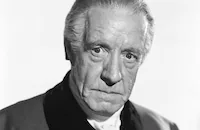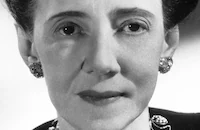New Morals for Old

Brief Synopsis
Cast & Crew
Charles Brabin
Robert Young
Margaret Perry
Lewis Stone
Laura Hope Crews
Myrna Loy
Film Details
Technical Specs

Synopsis
Well-to-do wallpaper manufacturer Thomas and his wife still worry and fuss over their now grown children, Ralph and Phyl, even though the younger Thomases try to exert their independence and a "modern" moral outlook. Ralph, who designs wallpaper for his father's company, wants to become a serious painter, while Phyl wants to be free to pursue a relationship with Duff Wilson, an unhappily married man. Two months after Ralph has promised his father to turn down an offer to study art in Paris for a year, Phyl tearfully confesses to Mr. Thomas that she has been spending every weekend with Duff and wants to get her own apartment to be with him. Though shocked, Thomas gently comforts his daughter, but the next day dies of a stroke. After the funeral, Mrs. Thomas, who does not approve of Phyl's behavior, begs Ralph to keep his promise to stay a year so that she will not be alone. When the year is up, Ralph finally goes to Paris to study with famed art teacher Bodvin, despite his mother's pleadings. Some time later, Phyl tells her mother that Duff's wife has agreed to a divorce and they soon will marry. Though still uneasy with each other, Mrs. Thomas and Phyl reconcile, and Mrs. Thomas tells her maid Alice that she will no longer interfere in her children's lives. On Phyl and Duff's honeymoon in Paris, they go to see Ralph, who has sunk lower and lower since being told by Bodvin that as an artist he could only be successful as a designer or decorator. Though impoverished and homesick, he refuses to go with Phyl, saying that he can't go home yet. Several months later, Ralph does return, though, unaware that Phyl had sent him a telegram saying that their mother is very ill. Mrs. Thomas is overjoyed when Ralph says that he is going to stay, but dies after they drink a toast to his return. About a year later, Phyl and Duff and their twin babies are happily living in the Thomas family home. While Ralph and stuffy old Aunty Doe visit for dinner one evening, one of the twins puts a button up his nose. As Phyl, Duff and Ralph become panic-stricken, Aunty Doe calmly helps the baby sneeze the button out. With the resolution of the momentary crisis, Ralph realizes that he has missed family life, and Duff and Phyl happily invite him to live with them. As he and Duff leave to get his things, Phyl tells them not to be out too late, and they laughingly realize that history is repeating itself as the younger generation starts to act like their parents.

Director
Charles Brabin
Cast

Robert Young
Margaret Perry

Lewis Stone

Laura Hope Crews

Myrna Loy
David Newell

Jean Hersholt

Ruth Selwyn
Kathryn Crawford
Louise Closser Hale
Mitchell Lewis

Elizabeth Patterson
Lillian Harmer
Crew

Film Details
Technical Specs

Articles
New Morals for Old
By Violet LeVoit

New Morals for Old
Quotes
Trivia
Notes
John Van Druten's play opened in New York on December 3, 1931. Madeleine Carroll played the role of "Phyl" in the London production, and Margaret Perry, who made her motion picture debut in the film, played the role in the New York production. According to a news item in Film Daily, David Newell took over the role of "Duff" from Donald Cook, who had an auto accident just after filming began. Another news item noted that Tully Marshall had been added to the cast, however, he was not in the released film and it has not been determined at what point his role was removed. The church used in the opening scene of the film is the First Methodist Church on Franklin Blvd. in Hollywood.














